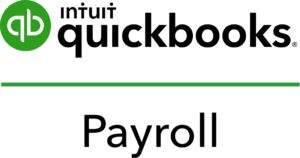Starting a business in the UK is as easy as opening a laptop or switching on your smartphone. Case in point is websites like eBay, Instagram and Fiverr that are full of people flexing their side hustles, pushing the number of self-employed people to a peak in 2020 of more than 5 million, up from just over 3 million in 2000.
But while hundreds of thousands of people strike out on their own each year, only a small proportion of these businesses grow their headcount beyond the initial founder. Of the current crop of 5.6 million private sector businesses, 4.2 million have no employees.
Given the amount of creativity and effort on show, what’s holding the country back?
Recruiting people takes time
The key issue for budding entrepreneurs is that while starting a business is easy, recruiting people to help run that business is hard. First, there’s the practical reality that, in order to take on a recruit, you must devote time away from core business tasks to prepare for a newcomer, finding the right talent, and then training them to work independently.
Lastly, you must sacrifice revenue to pay them adequately for the work they do, as well as related costs. In short, most businesses can’t avoid a short-term hit when they become an employer for the first time – which puts a lot of people off.
Then there’s the admin. Small businesses know that the Government’s main concern is that you pay your taxes on time, but when you start recruiting it wants – quite rightly – to ensure that you treat people fairly and that they have a safe working environment.
So there’s a lot more admin.
Growing a business means stepping back, at least to a degree, from your day-to-day work and focusing on issues related to HR compliance. Of course, you might employ more people to take care of this work too, leaving you to deal exclusively with strategy and growth, but that step is probably somewhere off in the future.
If you’ve made the decision to employ someone, then congratulations. The following checklist will help you navigate the basics of becoming a boss.
Discover more around small business payrollSeven steps to growing your team
Let’s imagine you have already interviewed a selection of candidates and are ready to hire. You’ve cast the net wide, reviewed CVs, had the conversations, ensured they’re made of the right stuff and, finally, you’re ready to move forward. Now, take time to ensure you’re ready.
#1 – Legal status
For obvious reasons it’s hard to quantify how many people are working in the UK without the legal right to do so.
It’s why the authorities take an extremely dim view of employers hiring workers illegally, with maximum penalties including five years in prison and unlimited fines.
The law targets those with “reasonable cause to believe” a member of staff lacks the right to work in the UK, perhaps because they don’t hold the right permissions or aren’t allowed to carry out certain types of work.
Always assess documents for authenticity and carry out a right to work check if you are concerned, especially if you operate in an industry where the problem is common. And don’t assume that if a person has a National Insurance number, they have a right to work in the UK. This isn’t always the case. And conversely, someone may have a right to work but not have a National Insurance number.
#2 – Pay at least minimum wage
The National Minimum Wage is there to ensure people get a basic rate of pay. The rate varies among different age groups and workers over 23 years of age are entitled to the higher rate National Living Wage.
The legislation affects all employers, large and small, and the rate of basic wages increases most years, set by the Low Pay Commission. It’s worth checking the current National Minimum Wage and National Living Wage rates.
#3 – DBS checking
If your employees will be working with vulnerable groups, such as children and people with special needs, they’ll also need to pass a Disclosure and Barring Service (DBS) check.
A DBS check will turn up any unspent convictions, while more thorough versions also show whether candidates appear on any lists barring them from specific roles. You can check which DBS check is right for your employee.
#4 – Get insured
You’re responsible for the welfare of your people, so secure employers’ liability (EL) insurance before their first day on the job. EL insurance will help you pay compensation if an employee is injured or becomes ill because of the work they do for you.
The policy should provide at least £5 million of cover and come from an authorised insurer. Otherwise you’ll pay a £2,500 fine for each day you employ someone without a policy in place.
#5 – Provide a written statement of employment
As an employer you must provide this – it sets out the terms of employment – if you’re employing someone for more than one month. It must include important details such as pay, working hours, holiday entitlement, sick pay and other paid leave (even if you only keep to the statutory minimum requirements), any benefits, as well as conditions for termination. (It’s worth noting that a written statement of employment isn’t the same as an employment contract.)
As a start, you can download the template provided by Acas.
#6 – Tell HMRC
Before taking on your first employee, register as an employer with HMRC. You must do this within four weeks of new staff members’ first payday. HMRC will provide you with an employer PAYE reference number, which can take up to five working days.
Sticking with financial matters, you must also set-up and manage a basic workplace pension scheme for all eligible employees. And you must make an employer’s contribution where applicable.
#7 – Get organised
With all of the above to manage, it pays to get organised. Smart, simple accounting software smooths tasks such as bookkeeping, staff expenses and payroll, as well as invoicing and VAT tax calculation.
The best accounting software allows you to synchronise with your preferred business apps, while automating the link between your bank accounts and your business’ financial records, removing a lot of admin.
If you’re serious about your business, employing people is a must. Doing it for the first time is a daunting task, but with the right preparation and tools you can make a success of it, potentially laying the foundations of stellar growth to come.
SmallBusiness.co.uk has teamed up with Intuit Quickbooks to help you find the right Payroll software for your business. To find out more about getting your payroll and business finances all in one place, click here

Read more
Five employee benefits to attract the best talent when recruiting for your business





